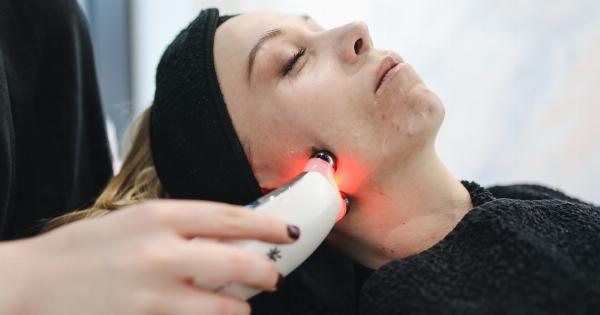Orthopedic issues refer to the medical conditions that affect the musculoskeletal system, including bones, muscles, joints, tendons, and ligaments.
Treating these issues often involves advanced techniques such as histogenesis that stimulate the growth of tissues. In this article, we will explore the histogenesis techniques used for orthopedic issues, how they work, and their benefits.
What Is Histogenesis?
Histogenesis is a medical technique that involves regenerating tissues using cells and biomaterials.
The technique is based on the concept of tissue engineering, which involves combining cells, biomaterials, and other factors to create functional tissues that can replace damaged or diseased tissues.
Orthopedic surgeons use histogenesis to help patients with tissue damage in their joints, bones, or tendons. The technique involves incorporating cells and biomaterials into the affected area to stimulate tissue regeneration.
The aim is to create new tissue that can restore the normal structure and function of the affected area.
Types of Histogenesis
There are two main types of histogenesis techniques: autologous and allogeneic. Autologous histogenesis involves using the patient’s cells to create new tissue, while allogeneic histogenesis uses cells from a donor.
Autologous Histogenesis
Autologous histogenesis involves taking cells from the patient’s own body and using them to regenerate new tissue. The process usually involves the following steps:.
- Cell isolation: The surgeon isolates the patient’s cells from the damaged or diseased tissue using a biopsy or other techniques.
- Cell expansion: The cells are then cultured and expanded in the laboratory to increase their numbers.
- Cell delivery: The expanded cells are injected into the affected area, where they can grow and regenerate new tissue.
The advantage of autologous histogenesis is that it uses the patient’s own cells, which reduces the risk of rejection and other complications. However, the process can be time-consuming and expensive, and may not be suitable for all patients.
Allogeneic Histogenesis
Allogeneic histogenesis involves using cells from a donor to regenerate new tissue. The process usually involves the following steps:.
- Cell isolation: Cells are isolated from the donor tissue, usually bone marrow or adipose tissue.
- Cell expansion: The cells are cultured and expanded in the laboratory to increase their numbers.
- Cell delivery: The expanded cells are injected into the affected area, where they can grow and regenerate new tissue.
The advantage of allogeneic histogenesis is that it is less time-consuming and cheaper than autologous histogenesis. However, there is a risk of rejection and other complications, as the cells are from a donor and not from the patient’s own body.
Benefits of Histogenesis
Histogenesis offers several benefits for patients with orthopedic issues:.
- Regenerates damaged tissue: Histogenesis can stimulate the growth of new tissue, which can replace damaged, diseased, or lost tissue.
- Reduces pain: The new tissue can restore the normal structure and function of the affected area, reducing pain and improving mobility.
- Minimally invasive: Histogenesis is a minimally invasive technique, which means that it involves small incisions and less trauma to the surrounding tissues.
- Faster recovery time: Patients who undergo histogenesis may experience a faster recovery time compared to traditional surgery.
Advanced Histogenesis Techniques for Orthopedic Issues
Recent advances in technology have led to the development of advanced histogenesis techniques that offer even more benefits and better outcomes for patients with orthopedic issues. Some of the advanced techniques include:.
Platelet-Rich Plasma (PRP) Therapy
PRP therapy involves using the patient’s own blood to stimulate tissue regeneration. The patient’s blood is drawn and then processed to isolate the platelets, which contain growth factors that can stimulate tissue regeneration.
The platelets are then injected into the affected area, where they can promote tissue growth and healing.
Bone Marrow Aspirate Concentrate (BMAC) Therapy
BMAC therapy involves using bone marrow from the patient’s own body to stimulate tissue regeneration.
The bone marrow is aspirated from the patient’s hip bone and then processed to isolate the stem cells, which can differentiate into different types of tissue. The stem cells are then injected into the affected area, where they can grow and regenerate new tissue.
Adipose-Derived Stem Cell Therapy
Adipose-derived stem cell therapy involves using stem cells from the patient’s own fat tissue to stimulate tissue regeneration.
The fat tissue is surgically removed from the patient’s body and then processed to isolate the stem cells, which can differentiate into different types of tissue. The stem cells are then injected into the affected area, where they can grow and regenerate new tissue.
Conclusion
Histogenesis is an advanced technique used to regenerate tissues and treat orthopedic issues such as joint, bone, and tendon damage.
Autologous and allogeneic histogenesis are the two main types of histogenesis techniques, with each having its advantages and disadvantages. Recent advances in technology have led to the development of advanced histogenesis techniques such as PRP therapy, BMAC therapy, and adipose-derived stem cell therapy, which offer even better outcomes for patients with orthopedic issues.

























